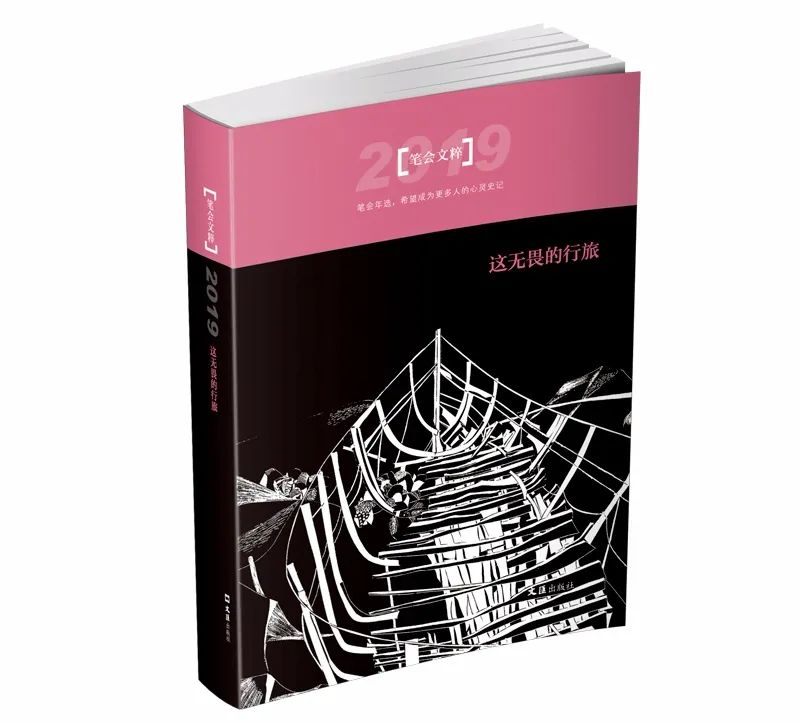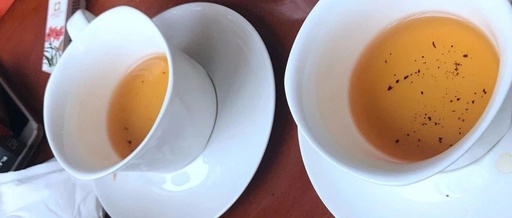
Not long ago, a friend gifted me a beautifully packaged box of Wuyi Rougui (Wuyi Cinnamon).
I am not well-versed in tea, and upon seeing the word “cinnamon,” I assumed it was a box of traditional Chinese medicinal materials. However, upon opening the box, I found a certificate of honor stating it had won the “Gold Award for Oolong Tea” at the 2015 Milan Expo, and I realized this was a box of fine tea.
I am not an expert in tea, but I enjoy drinking it. I usually prefer green tea, often accompanied by Longjing (Dragon Well), Maofeng, and Biluochun (Green Snail Spring). Friends have gifted me local green teas like Lüyangchun (Green Poplar Spring from Yangzhou) and Sanshan Xiangming (Three Mountains Fragrant Tea from Zhenjiang), which are delightful and frequently consumed.
Sometimes, I also sample Oolong tea. I recall often visiting my senior, Pan Xulan, who would serve me high-quality Oolong teas like Tieguanyin (Iron Goddess of Mercy) and Dahongpao (Big Red Robe). The tea tray would hold a zisha (purple clay) teapot and small tea cups, exuding a fragrant aroma, making for a pleasant atmosphere for conversation. However, I was unfamiliar with the cinnamon in Oolong tea, and I felt quite ignorant.
As for cinnamon as a medicinal material, I have long known its name. I have a textbook on traditional Chinese medicine, Chinese Herbal Medicine, which I often browse. I know that cinnamon is a commonly used herb in TCM; it is spicy, sweet, and warming, used to tonify fire, warm yang, dispel cold, and alleviate pain. The spice we commonly have in our kitchens, known as Gui Pi (Cinnamon Bark), is actually cinnamon. “Gui Pi” is the common name, while “Rougui” is the scientific name. In TCM, there is not only cinnamon but also Gui Zhi (Cinnamon Twig). Cinnamon is the bark of the cinnamon tree, while cinnamon twig is the tender branch of the tree, with similar effects. However, cinnamon twig is lighter and disperses exterior cold, while cinnamon is heavier and enters the lower body, warming and transforming internal cold. Typically, Gui Zhi is used to treat exterior wind-cold, while Rougui is used for cold conditions in the lower jiao (lower abdomen).
There are also some legends about cinnamon in TCM. In the Ming Dynasty, Li Shizhen in his Bencao Gangmu (Compendium of Materia Medica) stated that it can “tonify the kidney and benefit fire to dispel yin,” and “long-term consumption can enhance spirit and prolong life.” In the Jin Dynasty, Ge Hong in Baopuzi described it even more fantastically: “Cinnamon can be combined with bamboo sap and taken with turtle brain. After seven years, one can walk on water and achieve immortality. Zhao Tuozi took cinnamon for twenty years, walking five hundred miles a day and lifting a thousand pounds.” Zhao Tuozi refers to Zhao Tuo, the King of Nanyue during the Han Dynasty, who was originally a general of the Qin Dynasty and later ruled Lingnan, passing away at the age of 103 during the reign of Emperor Wu of Han. As for claims of walking on water, achieving immortality, walking five hundred miles a day, and lifting a thousand pounds after consuming cinnamon for many years, these should be taken with a grain of salt, as such tales from the realm of immortals are often unfounded and should not be taken seriously.
How does cinnamon relate to tea? What exactly is cinnamon tea? I was curious and wanted to explore this further, so I consulted some materials and gained a bit of understanding.
Cinnamon tea, also known as Yugui Tea, is produced in Wuyi Mountain and is one of the varieties of Wuyi rock tea. It is a semi-fermented tea that lies between green tea and black tea. This type of tea is also referred to as Oolong tea. The representative varieties of Oolong tea include Tieguanyin from Anxi in southern Fujian, Dahongpao from Wuyi in northern Fujian, and Dongding from Nantou in Taiwan. They are well-known historical brands both domestically and internationally. In recent years, Wuyi rock tea cinnamon has gained a rising reputation, winning multiple awards in Oolong tea competitions, and although its history is short, it is becoming an increasingly influential “new star.”
Enthusiastic tea friends have also given cinnamon tea many interesting nicknames based on its origin, such as: Niurou (Beef from Niulan Pit), Marou (Horse from Matuo Rock), Huru (Tiger from Huxiao Rock), Shirou (Lion from Qingshi Rock), Longrou (Dragon from Jiulong Cave), Xiangrou (Elephant from Xiangbi Rock), Yingrou (Eagle from Yingzui Rock), Guirou (Ghost from Guidong), and Xintou Rou (Heart from Tianxin Rock). Some even use homophonic substitutions, such as Zhuru (Pork from Zhuzha) and Yangrou (Lamb from Yangmei Cave or Yangdun Rock). Being able to taste the “full meat feast” is a desirable experience for tea enthusiasts and is highly admired.
Having been a language teacher for a lifetime, I have developed a habit of analyzing words. Today, I also want to take a closer look at the term “Rougui”:
Why is “Rougui” also called “Yugui”?
In tea shops, “Rougui tea” is sometimes written as “Yugui tea.” In TCM prescriptions, “Rougui” is often written as “Yugui” as well. Why is this phenomenon? I believe that in ancient Chinese and dialects, “Rou” and “Yu” are homophones; they are different in writing but the same in speech. “Yu, pronounced as ‘yu'” (from Yunlüetong). “Yu, pronounced as ‘xi'” (from Jiyun). “People from Wu regard ‘yu’ as ‘naughty'” (from Li’s Phonetic Guide: Ancient Dialect Discussion). In today’s Shanghai dialect, the pronunciations of “Yu” and “Rou” are also the same. People often write “Rougui” as “Yugui,” perhaps because the character “Yu” is simpler and more elegant.
Why do the tea leaves named cinnamon share the same name as the medicinal material cinnamon?
In language, there are polysemous words, where a word can have multiple related meanings, utilizing metaphors, metonymy, and allusions to derive various extended meanings from the original meaning. For example, Taishan can refer to a father-in-law, Dukang can refer to wine, Shizitou can refer to large meatballs, and Ci Laohu can refer to a shrew. Many tea names are also polysemous, derived from their original meanings. The famous Longjing green tea got its name because it was first produced in Longjing Village near West Lake. “Longjing” is a polysemous term; its geographical meaning is the original meaning, while its tea name is the extended meaning. However, the tea name later overshadowed the geographical name, becoming much more famous.
Next, let’s focus on Oolong tea. Why is green tea called Oolong tea? According to Fujian Tea, during the Qing Dynasty, in the Yongzheng period, there was a skilled tea farmer named Su Long in Nanyan Village, Xiping Township, Anxi County, Fujian. He was dark and strong, and the villagers jokingly called him “Oolong.” The high-quality new variety of green tea he created was later named “Oolong tea.” Thus, the personal name is the original meaning of Oolong, while the tea name is the extended meaning. The three representative varieties of Oolong tea, Tieguanyin, Dongding, and Dahongpao, have similar naming origins. First, regarding Tieguanyin, it is said that Emperor Qianlong first tasted high-quality Oolong tea from Anxi in Fujian and was delighted, noticing that the freshly picked tender tea leaves resembled the beautiful face of Guanyin, and the finished product was dark like iron, thus he named it “Tieguanyin.” As for Dongding, it is named after the area where it is produced, the Dongding Mountain in Nantou County, Taiwan. Regarding the name Dahongpao, there are many legends, and I will introduce one that is relatively reasonable and detailed: During the Hongwu period of the Ming Dynasty, a scholar named Ding Xian was on his way to the capital for the imperial examination when he suddenly fell ill with severe abdominal pain while passing through Wuyi Mountain in northern Fujian. He fortuitously encountered a monk at the Yongle Zen Temple, who brewed tea from the temple’s collection for him, and his pain ceased. After Ding Xian became the top scholar, he returned to express his gratitude and circled the tea bushes three times while wearing a red robe, then hung the red robe on the tea tree. The top scholar also brought a can of this tea back to the capital. Coincidentally, the empress fell ill with a difficult-to-treat condition, and the imperial doctors were at a loss. The top scholar presented the can of Wuyi tea, and after the empress drank it, her health gradually improved. The emperor was overjoyed, rewarded him with a red robe, and ordered him to return to Wuyi Mountain to hang it on the tea tree as a sign of favor, designating this rock tea as imperial tea to be offered annually. Thus, this tribute tea from Wuyi became known as “Dahongpao.” It can be seen that the term “Dahongpao” has its original meaning related to clothing, while the tea name is its extended meaning.
Finally, let’s discuss the cinnamon in Oolong tea. Cinnamon is also a polysemous word; its medicinal meaning is the original meaning, while its tea name is the extended meaning. There are many similarities between them. First, the tree shapes are similar. They are both evergreen shrubs, with similar flowers and leaves, both having long oval-shaped leaves and small white or light yellow flowers. Second, the aromas are similar. Wuyi rock tea cinnamon has a sharp and intense aroma, with a rich cinnamon fragrance, slightly bitter on the palate, followed by sweetness, leaving a long-lasting aftertaste. In the Wuyi rock tea production area, there is a saying that “the fragrance of cinnamon is unmatched,” which is very similar to the aromatic quality of cinnamon as a medicinal spice. In the Qing Dynasty, Yuan Mei in Su Yuan Shi Dan (Food List) stated: “I used to dislike Wuyi tea, finding it too strong and bitter like medicine.” Third, the effects are similar. There is a saying in the folk that “drink green tea in summer and Oolong tea in winter,” due to green tea being slightly cold and Oolong tea being warm in nature. Oolong tea cinnamon can dispel cold and keep warm, tonifying fire and assisting yang, making it a warming tea, which is very similar to the medicinal cinnamon that is “spicy, sweet, and warming.” Because cinnamon tea is warm in nature, to avoid excessive heat and to prevent the roasted flavor from overshadowing its true taste, fresh cinnamon tea needs to be stored for a period to “reduce the heat.”
I am not particular about tea utensils, simply using an ordinary white porcelain cup to brew tea. Some say that a zisha teapot is suitable for brewing Oolong tea, as “seven brews still have lingering fragrance.” Others say that a zisha teapot is not suitable for brewing rock tea. Faced with the Wuyi cinnamon that my friend gifted me (it is a “star” with a medal!), I am unsure whether to buy a Yixing zisha teapot to serve it.
Click “Read the Original” to purchase from Wenhui Publishing House WeChat store
2019 Pen Meeting Selections: “This Fearless Journey”

[Recent Works Recommended by the Pen Meeting]
Qiu Shanshan: The Matter of Age
Xiao Fuxing: Three Teachers from Huiwen Middle School
Yang Yandi: Reflections on the Rise of Russian Music
Zhu Xiaofeng: “Standing Backwards,” Observing Frye
Zhi An: Stories from Beijing
Bi Feiyu: My Reading of “The Little Prince”
Xu Jianrong: Why Do Ducks Know the Spring River Water is Warm First
Huang Ke: Zhang Leiping is an Artistic Treasure
Nan Fan: Is Calligraphy a Face or an Expression?
Liu Cong: The Difference Between Calling Each Other “Brother” and “Younger Brother”
Yang Wenyu: Women and Famous Couplets
Wang Zhanhei: The Scenery Seen While Squatting
Li Tianyang: No. 93 Xin Cang Street
Lu Ming: Old Football
Wang Shiyue: The Kang Bed at Grandma’s House
Li Zhiming, Chen Wei: The Funeral of Ye Chengzhong

